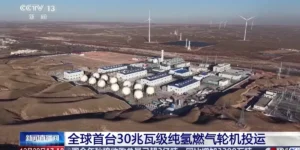Pros and Cons of Wave Energy

Wave energy, derived from the power of ocean waves, is increasingly recognized as a promising component of the renewable energy landscape. As the world grapples with the urgent need to transition away from fossil fuels, understanding the advantages and drawbacks of wave energy is crucial. This article delves into the pros and cons of wave energy, providing a comprehensive overview of its potential and challenges.
Pros of Wave Energy
Renewable and Sustainable
Wave energy is a renewable resource, continually replenished by the wind and the sun. Unlike fossil fuels, which are finite and contribute to environmental degradation, wave energy offers a sustainable solution that aligns with global efforts to combat climate change.
Environmentally Friendly
Wave energy is a clean source of power. It produces no greenhouse gas emissions, air pollution, or waste products during operation, making it significantly more environmentally friendly than traditional energy sources.
High Energy Density
Compared to other renewable resources like wind or solar power, wave energy has a higher energy density. Oceans cover about 70% of the Earth’s surface, and the energy they can generate is immense, providing a vast, untapped potential for clean energy production.
Predictability
Ocean waves are more predictable than wind and solar conditions, allowing for more consistent and reliable energy generation. This predictability makes wave energy a highly dependable source of renewable energy.
Minimal Land Use
Wave energy facilities primarily occupy ocean space and have a minimal land footprint. This is particularly advantageous compared to solar or wind farms, which require significant land areas and can lead to land use conflicts.
Scalability and Versatility
Wave energy systems can be scaled to suit various needs, from small-scale applications powering remote communities to large-scale installations feeding into the national grid. Additionally, wave energy can be harnessed near shorelines or in deeper waters, offering versatility in deployment.
Potential for Technological Innovation
The relatively unexplored nature of wave energy opens doors for significant technological innovation. As research progresses, new methods and materials may emerge, enhancing the efficiency and durability of wave energy systems.
Job Creation and Economic Boost
The development of the wave energy sector can create jobs in manufacturing, installation, maintenance, and research. This contributes to economic growth, particularly in coastal communities and regions with strong wave potential.
Cons of Wave Energy
Technological Challenges
Wave energy technology is still in its developmental stages compared to other renewables like solar and wind power. The harsh marine environment poses significant challenges in terms of design, durability, and maintenance of wave energy converters.
Environmental Impact
While cleaner than fossil fuels, wave energy can still have impacts on marine ecosystems. The installation and operation of wave energy devices can potentially disrupt marine habitats and affect the behavior of marine wildlife.
Cost
The current cost of wave energy technology is relatively high, partly due to its nascent stage and the complexities involved in operating in a marine environment. This makes it less competitive compared to more established renewable energy sources.
Limited Geographical Suitability
Wave energy is only viable in locations with strong wave activity. This geographical limitation means that wave energy cannot be harnessed effectively in all coastal regions.
Impact on Marine Navigation and Aesthetics
Wave energy installations can interfere with marine navigation and fisheries. They may also have visual impacts on coastal landscapes, which could be a concern for tourism and local communities.
Intermittency Issues
Despite being more predictable than wind or solar energy, wave energy is still subject to the variability of weather and sea conditions. This intermittency can affect the consistency of power supply, necessitating storage solutions or backup systems.
Challenges in Energy Transportation
Transporting the energy generated from wave farms to areas where it is needed can be challenging, especially if the wave energy sites are located far from the main grid or consumption centers.
Noise and Visual Pollution
Some wave energy devices might generate noise, which could affect marine life and potentially be a nuisance to coastal communities. Additionally, the visual presence of large structures in the ocean can be considered unsightly by some, impacting the natural seascape.
Balancing the Scale
While the advantages of wave energy are compelling, especially in terms of sustainability and environmental friendliness, the challenges it faces are non-trivial. Overcoming these hurdles requires concerted efforts in research and development to improve the efficiency, durability, and cost-effectiveness of wave energy technologies.
Investment in Research and Development
Increased funding and research into wave energy can lead to technological breakthroughs that reduce costs and enhance efficiency. This can make wave energy more competitive and accessible.
Environmental Monitoring and Regulation
Continuous environmental monitoring and thoughtful regulatory frameworks are necessary to minimize the impact of wave energy on marine ecosystems. By proactively addressing environmental concerns, wave energy can be developed responsibly.
Public and Private Sector Collaboration
Collaboration between governments, private companies, and research institutions can accelerate the development of wave energy. Public policies and incentives can play a crucial role in supporting this emerging industry.

We can harness waves for clean energy production without adversely impacting the environment, image source: Unsplash
Moving Forward with Wave Energy
To fully harness the benefits of wave energy while mitigating its drawbacks, a multi-faceted approach is required. This includes:
Enhanced Collaboration for Research
Collaborative efforts between governments, universities, and private industries around the globe can pool resources and knowledge, accelerating the development of more efficient and less intrusive wave energy technologies.
Public Awareness and Education
Increasing public awareness and understanding of wave energy, its benefits, and its challenges is crucial for gaining public support and addressing concerns related to environmental impact and visual aesthetics.

The kinetic energy produced by the back and forth movement of the waves is turned today into clean electricity (wave energy), image source: Unsplash
Developing Robust Policies
Policymakers should develop robust, informed policies that encourage sustainable development of wave energy. These policies could include subsidies, tax incentives, and support for research and development.
Innovative Design Solutions
Engineers and scientists should focus on innovative design solutions that minimize environmental impacts, reduce costs, and improve the integration of wave energy into existing energy grids.
Conclusion
The potential of wave energy as a sustainable and clean source of power is immense. Its pros, especially in terms of its renewable nature and low environmental impact, make it an attractive option in the renewable energy portfolio. However, addressing its cons, particularly the technological and economic challenges, is crucial for its future success. With continued innovation and responsible development, wave energy has the potential to play a significant role in the global transition to a more sustainable energy future.






